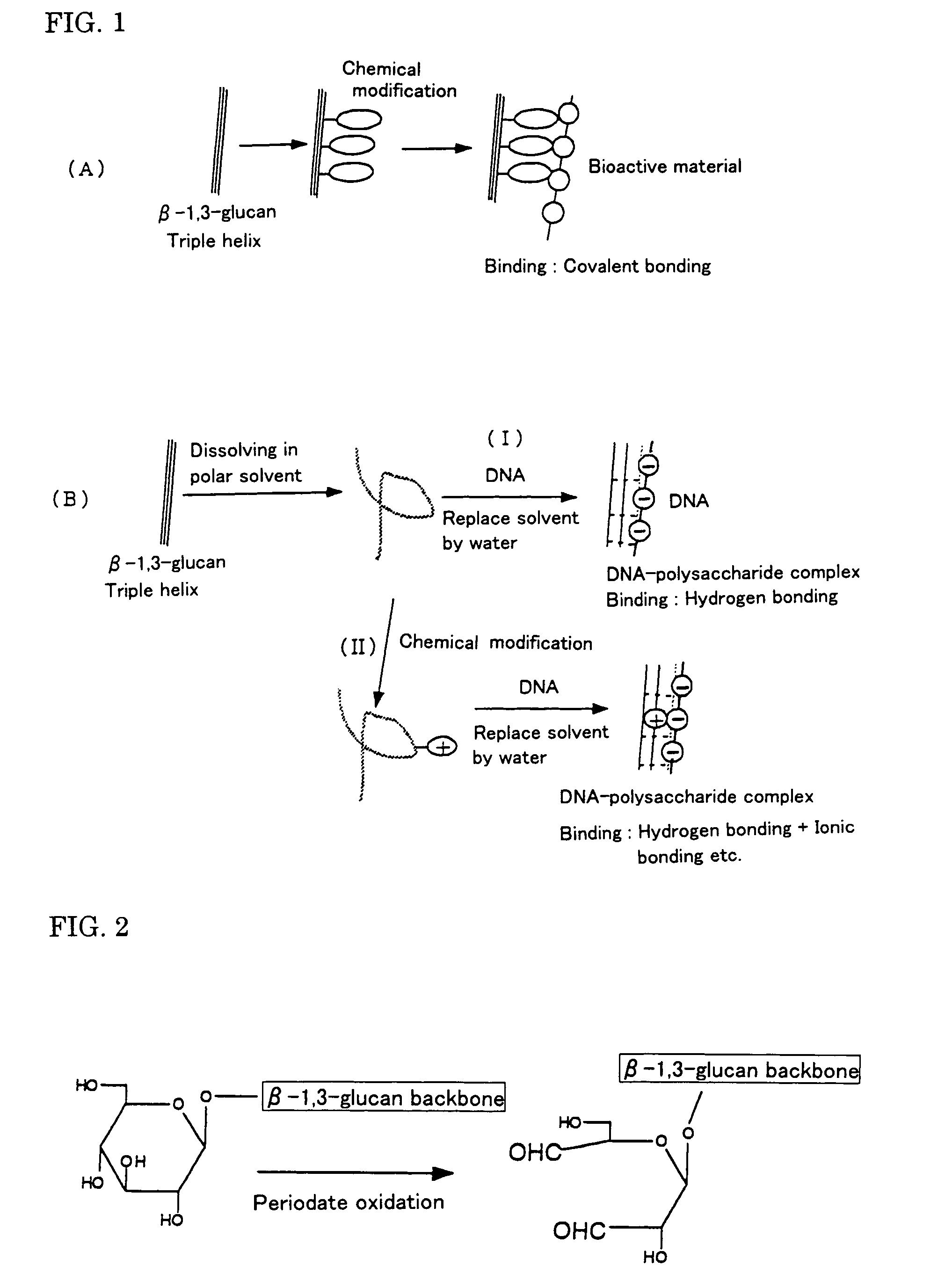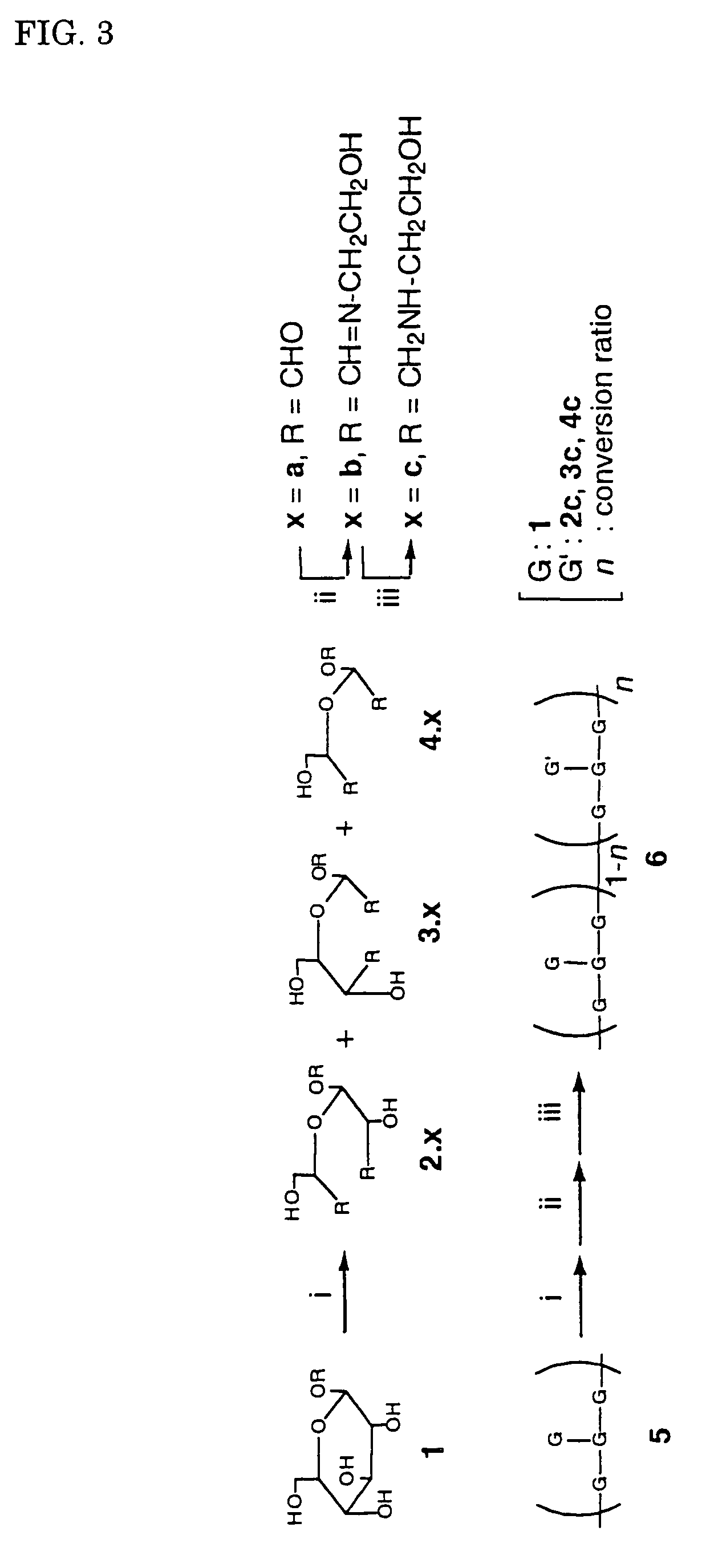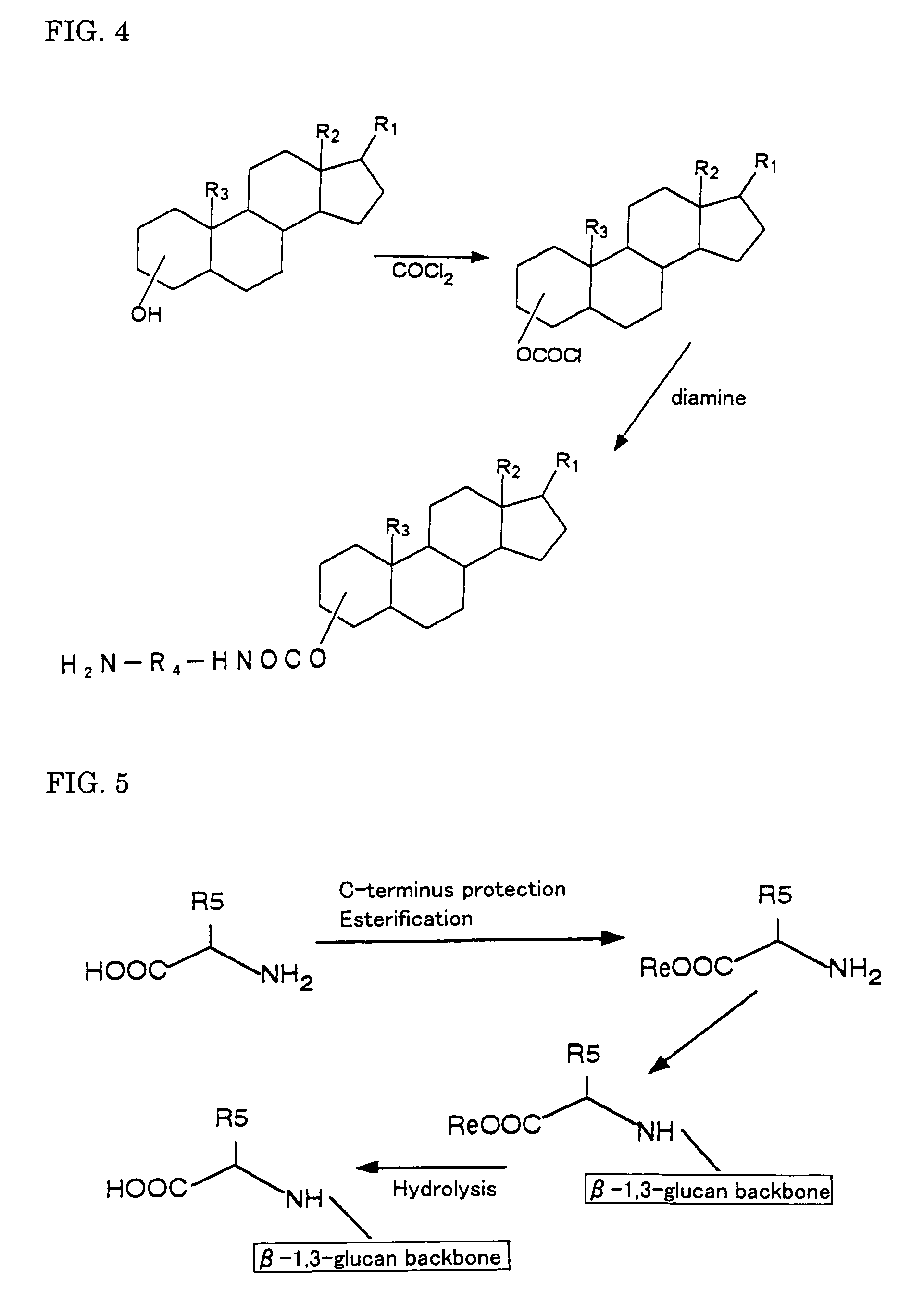Gene carriers with the use of polysaccharide and process for producing the same
a technology of polysaccharide and gene carrier, which is applied in the field of gene carrier, can solve the problems of in-vivo use of conventional gene carrier composed of artificial materials that have produced no significant results in human clinical studies, and the safety of cationic polymers such as polyethylimine has not yet been established
- Summary
- Abstract
- Description
- Claims
- Application Information
AI Technical Summary
Benefits of technology
Problems solved by technology
Method used
Image
Examples
example 1
Synthesis of Cationic Polysaccharide (Amino Group-Modified Schizophyllan), by Chemical Modification with Cationic Functional Groups
[0068]A polysaccharide of the present invention was synthesized in accordance with the reaction scheme as shown FIG. 3. It is possible to regulate the rate of introduction of amino group by regulating the equivalent number of sodium periodate for the periodate oxidation. The same method of synthesis is applicable regardless of the rate of introduction. The present example relates to the synthesis of cationic functional group-modified schizophyllan in which the schizophyllan is introduced with amino groups at a rate of introduction of approximately 2.5%, 17% or 37%. The amino group introduced was derived from 2-aminoethanol. It is possible to regulate the rate of introduction of the amino group by regulating the equivalent number of the sodium periodate with respect to the branching glucose moiety. The experimental results are shown in Example 2.
[0069]Tri...
example 2
Characterization of the Cationic Polysaccharide
[0071]Characterization of the polysaccharide imparted with the cationic functional groups as prepared in Example 1 was performed by measuring the molecular weight and the rate of introduction of the amino group. The molecular weight was examined through gel permeation chromatography (GPC) and also by measuring the viscosity. The molecular weight of the polysaccharide was found to be 150000, i.e., one third of that of the starting triple helix schizophyllan. The rate of introduction of the amino group was determined on microanalysis of nitrogen by elemental analysis (lower detection limit: 0.05%). The microanalysis of nitrogen was performed three times for each sample, with the upper and lower values being shown in the following table.
[0072]
TABLE 1Periodate EquivalentNitrogen ContentAmino Group Introduction Rate 4%0.09-0.12% 2.1-2.8%40%0.69-0.75%16.3-17.8%500% 1.15-1.54%35.2-37.4%
example 3
Interaction of Amino Acid-Modified Schizophyllan with Poly(C)
[0073]The thus-prepared schizophyllans modified with 2.5%, 17% and 37% of amino group (as the cationic functional group) were each dissolved in dimethyl sulfoxide, a polar organic solvent, to give a final concentration of 0.5 g / dL. To each resultant solution 100 μl, there were added pure water 900 μl, 10 mM Tris buffer 100 μL, and 0.1 g / L poly(C) (Pharmacia) solution 100 μl. The resultant mixtures were all clear, homogeneous solutions.
PUM
| Property | Measurement | Unit |
|---|---|---|
| pH | aaaaa | aaaaa |
| temperature | aaaaa | aaaaa |
| temperature | aaaaa | aaaaa |
Abstract
Description
Claims
Application Information
 Login to View More
Login to View More - R&D
- Intellectual Property
- Life Sciences
- Materials
- Tech Scout
- Unparalleled Data Quality
- Higher Quality Content
- 60% Fewer Hallucinations
Browse by: Latest US Patents, China's latest patents, Technical Efficacy Thesaurus, Application Domain, Technology Topic, Popular Technical Reports.
© 2025 PatSnap. All rights reserved.Legal|Privacy policy|Modern Slavery Act Transparency Statement|Sitemap|About US| Contact US: help@patsnap.com



